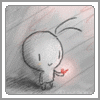





YIXUAN98-EMOPRINCESS.BLOGSPOT.COM ♥
|
Thursday, June 11, 2009 ♥ Just come back from CO . And these are my CO instructors are : ♥Mr Er Chiang Song ♥Ms Wee Kee Ho ♥Ms Lim Boon Guek ♥Mr Lin Yun Feng  This is the instrument that i play in CO ! Name call ERHU ! This is the instrument that i play in CO ! Name call ERHU ! And this is the histroy of er hu : The erhu can be traced back to instruments introduced into China more than a thousand years ago. It is believed to have evolved from the xiqin (奚琴), which was described as a foreign, two-stringed lute in Yue Shu (樂書, yuèshū, lit. book of music), an encyclopedic work on music written by music theorist Chen Yang in the Northern Song Dynasty. The xiqin is believed to have originated from the Xi people of Central Asia, and have come to China in the 10th century. The first Chinese character of the name of the instrument (二, èr, two) is believed to come from the fact that it has two strings. An alternate explanation states that it comes from the fact that it is the second highest huqin in pitch to the gaohu in the modern Chinese orchestra. The second character (胡, hú) indicates that it is a member of the huqin family. The name "huqin" literally means "barbarian instrument," showing that the instrument likely originated from regions to the north or west of China inhabited by non-Han peoples. The jing hu (京胡) is a variety of erhu that is used in Beijing opera, known in Chinese as Jing Ju (京剧). [edit] Historical erhu and bowed string bowsHistoric bowed zithers of China, including the xiqin, yazheng, and yaqin, and also the Korean ajaeng, were originally played by bowing with a rosined stick, which created friction against the strings. As soon as the horsehair bow was invented, it spread very widely. This is a high pitched instrument. The Central Asian horse peoples occupied a territory that included the Silk Road, along which goods and innovations were transported rapidly for thousands of miles across Eurasia. 
| RAMBLINGS ♥ LA FEMME ♥   
27 March . Sembawang Primary : 1D,2D,3D,4D,5D..... 11 . RULES NO RIPPING. Spam is allowed,but WITH YOUR OWN NAME. Respect me,respect my blog. Love it?stay:)! Hate it?SCRAM!! Hates Creepy insects. Irritating boys. Proud girls. Liers. H1N1. WISHLIST ♥ More and MORE carebears(keychain). New phone. Grow taller. Grow prettier. gold for napfa. Get high marks for psle. Chloe Wang's album. "A*" for maths. Be rich! MOOSIC BOX ♥ AFFILIATES ♥ Fayette♥ Catherine♥ Jelly♥ Ler Shin♥ yong xin♥ Li fang♥ lenet♥ crystal♥ hillar♥ hui yi♥ theresia♥ 4a blog♥ Cyn♥ Jazzy♥ Caliste(Jia Yi)♥ Chrislyn♥ Jeanne♥ Cheryl♥ Jia Shao♥ Yuyan♥ Yohanna♥ Ron♥ Nicholas♥ Monnut♥ Litong♥ Jolyn♥ 6A'08♥ 6A'08 HTML♥ ateenFURTEENS♥ CO2008♥ Linling♥ Iffah♥ INSTANT TIME MACHINE ♥ June 2009 July 2009 September 2009 October 2009 TAKE A BOW ♥ Designer: ♥PURPLE.licious- Basecodes: detonatedlove♥, dreyfire Materials: Photobucket, Glitter-Graphics You can hate me but you can't forget me. |


